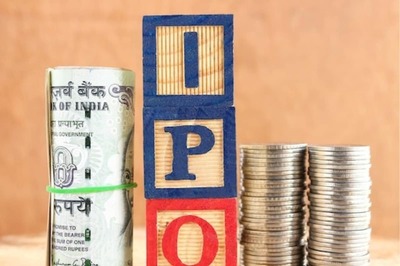
views
Kapran (Kashmir): Every day, Aliya Khan, a fifth grader in Kashmir, steps out of her house and walks down a dirt lane lined by tall maple trees to check on what’s happening at her school.
And every day, a few minutes later, she walks back to her house with her head hanging down, totally dejected. It has been nearly three months, and no one knows when her school, like so many others in Kashmir, will reopen.
“I’ve told you, the school is shut,’’ her mother, Rubeena Khan, scolded her the other day as Aliya walked inside. “Why do you keep going to look?”
Thirteen weeks after India unilaterally revoked Kashmir’s autonomy, education stands as one of the crisis’ most glaring casualties.
At least 1.5 million Kashmiri students remain out of school. Virtually all private schools are closed, and most government schools are shut — one of the clearest signs of the fear that has gripped Kashmir since the government locked down the territory and separatist militants began carrying out attacks to disrupt its control.
The government wants students to return, and teachers at the few open schools are reporting for duty. But their students are not: Officials estimate attendance at those schools to be around 3%.
Parents in the Kashmir Valley say they are terrified of sending their children out with troops everywhere and separatist militants on the prowl for trouble. The militants are demanding that civilians boycott work and school, and they have killed several people to assert their resistance to tightening New Delhi rule.
This week, militants dragged construction workers onto the street and shot them, leaving five dead and one wounded. It was the deadliest single attack on civilians since Kashmir’s autonomy was stripped.
“What if the school or a bus carrying children is attacked?” asked Saqib Mushtaq Bhat, a father worried about violence. “What if there are protests and their faces get shot by pellets?’’
He would never forgive himself, he said, so he keeps his three children home.
The result is fear, bewilderment, sullenness and boredom. Some of the older students worry that their dreams of becoming professionals were ruined. And many children said they were lonely and depressed, relegated to watching television for hours a day.
“There’s nothing else to do,” said Reyan Sofi, a fourth grader.
The dispute between India and Pakistan over Kashmir has smoldered for decades, at times flaring into major disruption to life in the valley.
This generation of Kashmiri children has been among the hardest hit. They have known nothing but conflict. For the past 10 years, huge protests and clashes keep erupting. Many young people have seen friends killed, maimed or hauled off by security forces. Their schools are constantly closing, sometimes for months at a time.
“The long school closures in the valley are causing major disruptions in young people’s educational and professional development, producing feelings of insecurity, helplessness and demoralization,” said Haley Duschinski, an anthropologist at Ohio University specializing in Kashmir.
This latest round of trouble has felt particularly ominous, many Kashmiris say.
The government’s move in August to strip statehood away from Jammu and Kashmir became official Thursday, turning what was once an Indian state into federally controlled enclaves. People are angry and scared that India’s move could lead to another war with Pakistan, which also claims the area, or to pitched combat with an intensifying militant movement.
Officials insist it is now safe for children to go to school and blame parents for not sending them back.
“It’s a big loss,” said Younis Malik, Kashmir’s director of school education.
But many here blame the government for creating this crisis and say that officials are not serious about guaranteeing the children’s safety or resuming education.
The children, meanwhile, are desperate to get out of the house and go back to school. They want to see their friends. They want to learn new things. They know their futures depend on it.
“You should either burn my books and my uniform or send me to school,” Reyan, the fourth grader, grumbled to his father on a recent day as they sat in their house in Baramulla, a town in northern Kashmir.
His father, Pervaiz Ahmad Sofi, a forestry professor, threw open a window and pointed toward a group of soldiers in riot gear, stationed just outside their house, guarding a highway.
“Now tell me, do you still want to go to school?” he said. Reyan looked down and walked away, back to the TV.
Indian schools are intensely competitive. Mehak Javid Bhat, an 18-year-old, was preparing for medical school when her high school shut. With just four months to go before her make-or-break exam, she can’t compare study notes with her friends because none of their phones work. She can’t get on the internet to look things up she doesn’t understand. She can’t get in touch with her teachers.
“My dream of becoming a doctor is ruined,” she said. “Sometimes I wonder why was I even born here.”
Her father, Javid Ahmad Bhat, feels helpless. He had been tucking away a little money from his apple orchards each year to help pay for medical school.
“It’s like my 10 years of savings are being destroyed every day when I see her suffer,” he said.
“You need a guide, a teacher and a friend — but she has none these days to solve her problems,” he said.
Some Kashmiri educators refuse to give up. Mufeed Ahmad Malik, a high school physical education teacher, walks through villages in south Kashmir like a letter carrier, delivering homework assignments door to door.
“Read it and prepare yourself,” Malik repeated at each door, his shoulder bag bulging with papers. “And come to school on the day of the exam.”
The nearby government school, where he teaches, keeps its gates shut. The teachers arrive in the morning and sit in a courtyard savoring the fading sun — winter is on its way.
Some have taken up knitting, and as they talk about the situation and how it affects their lives, they make woolen sweaters. Then they leave in different directions to deliver homework. They were not confident that many children would show up for exams.
Malik fears that if the schools don’t reopen soon, some children will go down the wrong path. In southern Kashmir, many boys revere the militants. They have grown up playing games in which they dress up as militants or Indian soldiers, hiding behind apple trees, firing wooden guns at each other.
“If they don’t even sit for exams,’’ Malik said of his male students, “they will end up becoming militants.”
The security forces already assume that is happening, focusing their suspicions intensely on teen boys or young men. Many have been jailed, at times hauled off without process or explanation, and that number is only increasing.
Other young people are being put to work, like Musaib Amin, 15, who now helps his grandmother in the fields, picking tomatoes. In August, one young man who should have been in college (colleges and universities are empty, too) died after he was bitten by a snake while herding sheep. His bite was treatable. But his family could not call an ambulance or find the anti-venom.
Aliya, the fifth grader who keeps checking on her school, hasn’t given up hope. The other day, she opened her closet and stared at her white and gray uniform. It remains crisply ironed, untouched since August.
“I miss wearing it,” she said.
She ran outside to play in the yard, by herself.
Sameer Yasir and Jeffrey Gettleman c.2019 The New York Times Company




















Comments
0 comment